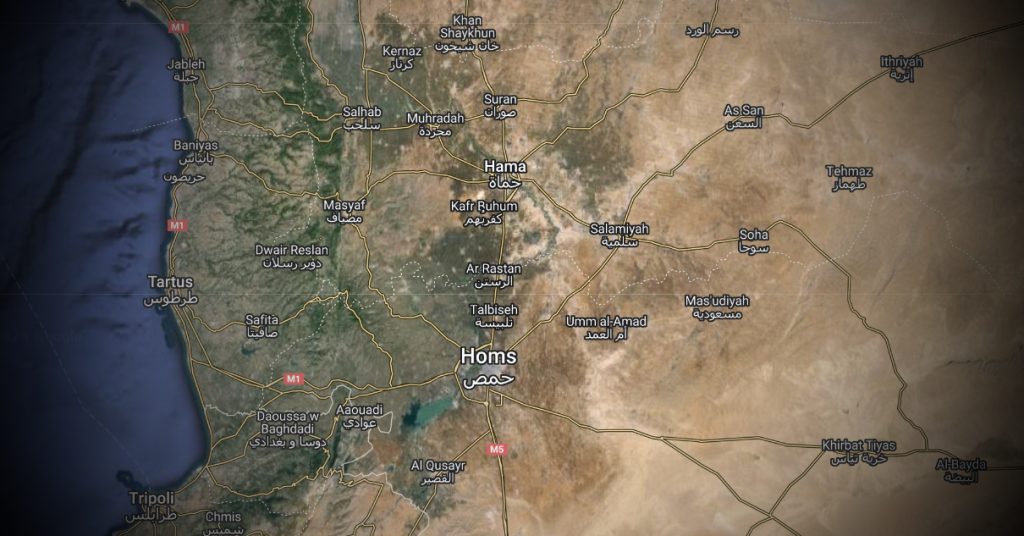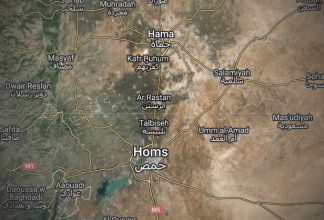Report 7: Hearing of Witnesses Part 1

The previous report covered the testimonies of expert witnesses that testified about their knowledge of military structures. This report summarizes the testimonies of witnesses that were heard on 3, 7 and 8 May. An Arabic version of the report can be found here.
Witness 1
On 3 May, the prosecution cited three police hearings of a defector from the Syrian army that was previously a high-ranking officer in the Syrian army and a part of President Bashar al-Assad’s inner circle for many years. The person was called as a witness in the main hearing to testify as an insider on the military structure and geographical division of the Syrian army. However, the hearing was cancelled due to circumstances not publicly disclosed. Instead, the prosecution read out statements made by the witness in hearings with French authorities in another investigation, which the Swedish authorities had obtained through a European Investigation Order. The hearings in question were held in 2015, 2019 and 2021 respectively.
The prosecution referred to segments of the witness’ hearings with the French authorities wherein discussions regarding the Syrian army’s military’s structuring were addressed. In his statements, the witness established that the 11th division had operated in Homs during the period covered by the indictment. Furthermore, he asserted that the functional units operated under the authority of the head of the division. However, he noted, when the armament unit required replenishment of arms and ammunition, the head of the unit could approach the head of the Directorate General of Armaments directly.
He asserted that the heads of units within the 11th division were aware of the operations conducted by their division and that the head of the armament unit was responsible for assessing the replenishment needs within the division. In addition, the witness confirmed that a massacre occurred in Al-Houla on 25 May 2012, that the 11th division was present during operations in Ar-Rastan during 2011-2012 and that an order for “cleaning up” Baba Amr was issued by the President at the beginning of 2012. He underscored that the President as well as all officers were fully aware of the implications of “cleaning up” the district.
Witness 2
Witness 2 testified on Tuesday 6 May and provided an account of his experiences and observations in Syria from 2011 to 2012. He defected from the Syrian army in May of 2011 after serving as a lieutenant in the 5th division.
Witness 2 described how the Syrian army attacked areas in Homs and the impact on the civilian population. According to Witness 2, his decision to defect stemmed from witnessing the Syrian army’s mistreatment of civilians and emphasized his desire to protect the population rather than participate in harming civilians.
After leaving the army, he returned to his family in Ar-Rastan and later moved to Homs, where he aided opposition forces with the aim to protect civilians participating in demonstrations from the security forces and the Syrian army. He further described that he travelled to Baba Amr to protect civilians participating in demonstrations there. He explained that Baba Amr was a focal point for demonstrations and media attention and described the various intense military offensives against the city, along with the heavy artillery fire on the media centre. Regarding his involvement in the armed resistance in Baba Amr, he mentioned using weapons acquired from the army to defend opposition-controlled areas against attacks by the Syrian army but emphasized that the resistance movement had a defensive rather than an offensive stance. When questioned about the existence of a centralized leadership or headquarters within the resistance groups in Baba Amr that could have been potential targets for the Syrian Army, his response was negative.
Witness 2 further emphasized that his information regarding the current structure of the Syrian army and its’ various units is not exact, as he was part of the resistance and thus not directly in contact with the Syrian army’s representative after he had left the army. However, he asserted that divisions 11 and 18 were geographically responsible for the Homs area and its surroundings, making it logical that these divisions were among the first present in the area. Witness 2 added to his testimony that there are officers present in Sweden who hoed higher ranks in the Syrian army than he did. He implied that he had done his best to cooperate by answering the questions, but that he could not provide advanced details about the Syrian army’s organisational structure since he had held a low rank the army.
Witness 3
Witness 3 testified on Tuesday 7 May. He is a former driver of the 18th division and shared his knowledge of events that transpired in Homs, and particularly the Baba Amr neighborhood, during the relevant time frame. He explained that he had worked as a driver for the 18th division’s Deputy Commander, who later became the Commander of the division. He acknowledged the involvement of the 18th division in attacks on Baba Amr, but claimed limited recollection of the specifics, as he followed the Deputy Commander and therefore was not present in the field. In response to this, the Prosecution read out a section from a protocol from the witness’ hearing with German police, in which he had said that he did in fact have some insight into operational details, as he would overhear conversations that the Deputy Commander had. In court, however, the witness claimed that he could not hear the conversations well and also emphasized his lack of knowledge in military strategic planning.
Witness 3 further recalled the presence of the 11th division in Baba Amr but was unsure of their exact role. When questioned regarding the violence targeted at Baba Amr, he confirmed that the civilian population and residential buildings were heavily injured and damaged. Witness 3 personal experiences included attempts to defect from the army, which led imprisonment and torture. He eventually fled from Syria in 2015.
Witness 4
Witness 4 testified on Wednesday the 8 May and recounted observations made while doing his military service in Homs, where he served as an escort for the Brigadier Major of the 18th division. He attempted to defect twice, facing imprisonment and eventual release. Finally, in 2015, he successfully fled to Europe.
He described the geographical responsibilities of the 18th Division, including areas like Baba Amr and Al-Bayadah, alongside other divisions like the 4th and 11th and the Republican Guard. When asked how he had obtained the information about the involvement of the 11th Division, he explained that he had learned this information through a conversation with the escort of the Brigadier Major for the 11th Division.
Regarding demonstrations and unrest in Homs, he detailed how the regime prevented gatherings. Furthermore, Witness 4 shared information about the violent suppression, including the killing of civilians, by the Republican Guard. He described that the leadership’s message and orders were to combat the demonstrations to prevent the regime from falling. According to Witness 4, the civilians started arming themselves after the killings.
He further explained that he provided escort to the Brigadier Major before the attack on a stadium in Baba Amr in 2012. According to Witness 4, the Free Syrian Army (FSA) resistance against the regime was strong, which made it difficult for the military to enter the area. Therefore, reinforcements from the 4th Division, 11th Division, and Republican Guard were needed. He further described that the defense minister was present at the scene and ordered the opening of fire. He claimed that the attack involved a significant number of tanks, estimated to be over 110-120, sourced from various areas including Damascus and Aleppo. According to Witness 4, both civilians and combatants were injured in Baba Amr. He explained the lack of warning to civilians before the attack and described the regime’s directive to suppress demonstrations to maintain the regimes power. Witness 4 highlighted the role of the military in the regime’s crackdown on civilians, which led to his decision to defect.
Witness 5
Witness 5 is the head of the Commission for International Justice and Accountability (CIJA), Instead of bringing him in to testify in court, a previous testimony by the witness with the Swedish police was played in court at the prosecutor’s request on Wednesday 8 May. CIJA has contributed to the case at hand with a significant amount of information, and the testimony of the witness was thus relevant for the assessment of the strength the submitted documents as evidentiary proof.
In his testimony, the witness provided information about CIJA, which is a non-profit NGO founded in 2014 with the primary goal of collecting, analysing and preserving information related to core international crimes for the purposes of making the information accessible to law enforcement authorities in various countries. The witness further explained that CIJA primarily collects two types of material from Syria: documents left behind by the regime when it has lost control over areas and records of interviews conducted with individuals knowledgeable about how the regime is structured. These interviews were primarily made with insiders rather than victims of atrocities.
During the police hearing, the witness was, inter alia, questioned regarding details on how various documents had been obtained by CIJA. The witness explained that CIJA’s data collection process involves identifying abandoned locations previously occupied by the regime where team members can collect official documents that have been left behind and transport them to safe areas. The collected documents are then moved across borders to Europe, where they are cleaned, prepared, triaged, and archived. The witness further explained that the organisation also receives documents from other individuals interested in preserving them, ensuring that these materials are also properly documented and archived.
Witness 6
Witness 6 testified on Wednesday 8 May about his observations while stationed at the 11th Division headquarters in Homs. During the hearing, the witness clarified that, as a conscript, he lacked sufficient knowledge to answer questions regarding the organisational structure and chain of command of the Syrian Army. He believed that orders typically went through the division’s management, as they were responsible, and that the Brigade were responsible to follow the orders from the management He noted that the armament unit was responsible for the division’s weaponry but had no direct knowledge of how orders were issued.
Regarding the attacks in Baba Amr and Ar-Rastan, Witness 6 stated that he had no additional information beyond what was publicly known through media. He explained that being in Shamsin, around 25-30 km away from Homs, he could hear the bombardments against the city. While he confirmed that Homs fell within the geographical responsibility of the 11th Division, he was not certain if they operated in other cities. He speculated that other divisions, such as the 18th Division, might also have been present in Baba Amr and Ar-Rastan.
Next report
The next report will summarize the testimonies of four witnesses heard on 13 and 16 May.
